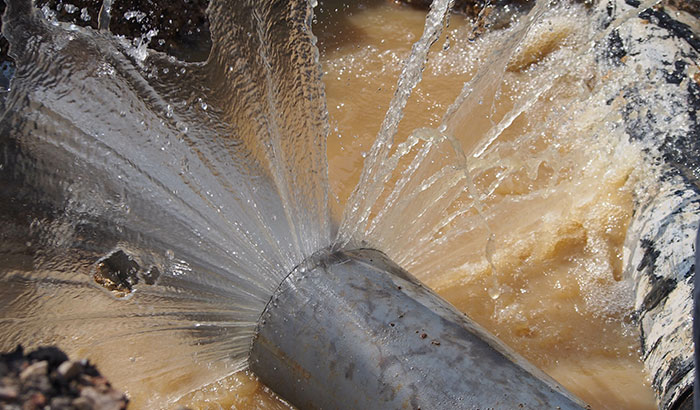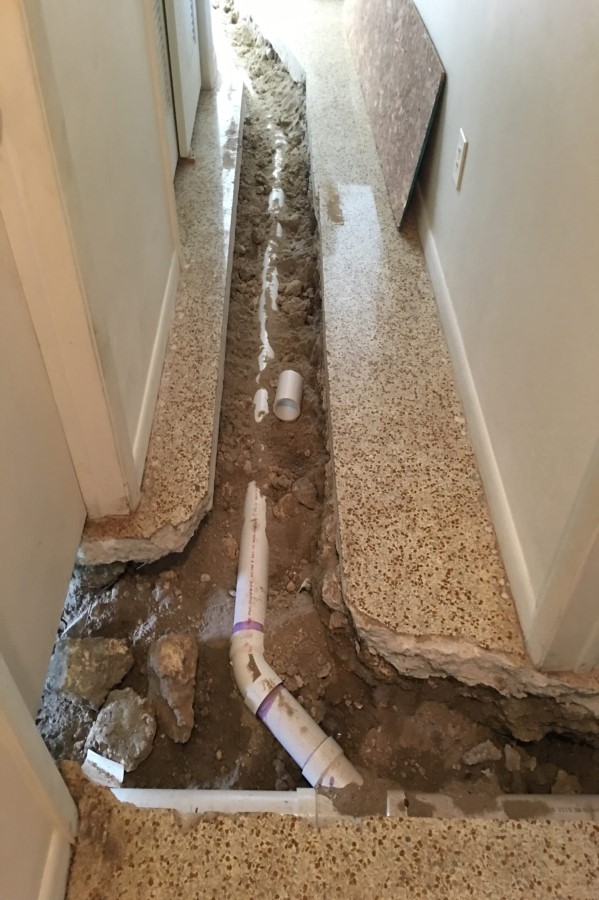What to Do When a Burst Pipe Causes Water Damage in Your Home
What to Do When a Burst Pipe Causes Water Damage in Your Home
Blog Article
Preventing Burst Water Lines: Necessary Tips to Protect Your Plumbing
Avoiding ruptured pipelines is an important concern for house owners, specifically during chillier months when the threat of cold is increased. Implementing calculated actions such as proper insulation, routine inspections, and keeping regular indoor temperature levels can considerably minimize the possibility of pipeline failure.
Understand Pipeline Vulnerabilities
Recognizing pipeline vulnerabilities is necessary for reliable pipes upkeep and preventing expensive damage. A number of factors add to the sensitivity of pipes to ruptureds, consisting of product structure, age, and environmental conditions. Older pipes, especially those made from galvanized steel or polybutylene, frequently break down in time, causing increased danger of leakages and tears.
Temperature level variations can likewise dramatically impact pipe integrity. In cooler climates, water trapped in pipes can freeze, expanding and applying pressure on the pipeline walls, which may eventually result in a burst. Furthermore, high water stress can strain pipelines, particularly at joints and bends, heightening the probability of failing.

Insulate Water Lines Correctly
Proper insulation of pipelines is crucial for stopping cold and succeeding bursts during winter (burst pipe). Protecting your pipes system effectively safeguards versus temperature level goes down that can lead to pricey damage. Begin by recognizing vulnerable areas where pipelines are subjected to outside temperature levels, such as basements, attic rooms, and outside walls
Use foam pipeline insulation sleeves or cover insulation tape around these areas to supply a protective obstacle. Ensure that all areas of the pipes, particularly those with restricted warm direct exposure, obtain adequate insulation. Pay special attention to fittings and joints, as these are much more vulnerable to freezing.
When insulating, it's vital to choose materials that satisfy regional building codes and are ideal for the particular setting. For instance, fiberglass insulation is typically advised for its thermal resistance residential properties - burst pipe. In addition, consider using warmth cables or tape in severe conditions, which can be connected in to give supplementary warm
Frequently examine shielded pipelines for any type of indications of wear or damage, as endangered insulation can reduce its efficiency. By taking these positive procedures, you considerably lower the threat of pipeline bursts, making certain a trusted pipes system throughout the cold weather.
Maintain Constant Temperature Level
A stable indoor temperature level is vital for stopping ruptured pipelines throughout the icy months. When temperature levels drop, water within pipes can freeze, increasing and producing pressure that might inevitably cause the pipelines to burst. To minimize this threat, homeowners ought to preserve a regular temperature level throughout their living room, ideally no less than 55 ° F(13 ° C)Utilizing a programmable thermostat can aid handle interior temperature levels effectively, ensuring that rooms with plumbing stay warm also when your home is unoccupied. Pay unique attention to areas that are a lot more susceptible to chilly, such as cellars, garages, and attics. Keeping cupboard doors open under sinks can also enable warmer air from the home to circulate around plumbing.
This minor flow of water can prevent freezing by relieving pressure within the pipelines. By implementing these approaches, home owners can significantly reduce the threat of pipe ruptureds and protect their plumbing systems against the rough winter components.
Routinely Check Plumbing
Routine evaluations of plumbing systems are crucial for preventing ruptured pipelines and preserving total home integrity. Throughout these examinations, it is crucial to take a look at noticeable pipelines for indications of rust, leaks, or wear.
Furthermore, examining joints and links is crucial, browse around here as these factors are frequently prone to leakages. Homeowners must additionally examine water pressure degrees, as too much stress can strain the plumbing system and raise the threat of pipe bursts.
Take into consideration organizing expert pipes assessments at the very least once a year, specifically before winter months, to guarantee your system is prepared for chillier temperature levels. By being aggressive in your method, you can guard your home versus the turbulent and costly effects of ruptured pipes.
Know Emergency Treatments
Recognizing emergency treatments is important for continue reading this each house owner, particularly after carrying out normal plumbing assessments. Being gotten ready for a plumbing emergency can substantially minimize damages and save prices. Locate your primary water shut-off valve; it is generally located near the water meter or where the main line enters your home. Familiarize on your own with its operation, as turning off the water system promptly can stop comprehensive flooding.
Next, keep vital tools convenient. A plumbing emergency kit should include a wrench, plunger, and towels, along with a flashlight and a container for small leaks. Additionally, consider having the call information for a trusted plumbing technician readily offered, needs to the scenario rise beyond your control.
If you detect a leakage or ruptured pipeline, instantly shut off the water and alert your plumbing professional. Moreover, document the damages with photographs for insurance policy objectives. burst pipe. Recognize see this page the indications of possible pipes problems, such as unusual water pressure fluctuations or damp areas on walls
Inevitably, aggressive understanding and quick action are critical in taking care of plumbing emergency situations, guaranteeing your home stays secured and reducing possible damage.

Final Thought
Finally, protecting against ruptured pipelines requires a diverse technique that consists of understanding pipeline susceptabilities, correct insulation, maintaining constant interior temperatures, routine inspections, and understanding of emergency situation procedures. By applying these vital strategies, the threat of plumbing failures can be dramatically decreased, thereby guaranteeing the long life and effectiveness of the pipes system. Aggressive procedures not just safeguard against possible damage yet additionally add to total water conservation and the security of residential or commercial property.
In colder environments, water entraped in pipes can ice up, putting in and expanding stress on the pipeline wall surfaces, which may eventually lead to a burst. When temperatures drop, water within pipelines can freeze, expanding and developing stress that might inevitably trigger the pipelines to burst. By executing these strategies, homeowners can significantly lower the threat of pipe bursts and secure their pipes systems against the harsh winter months elements.

Report this page